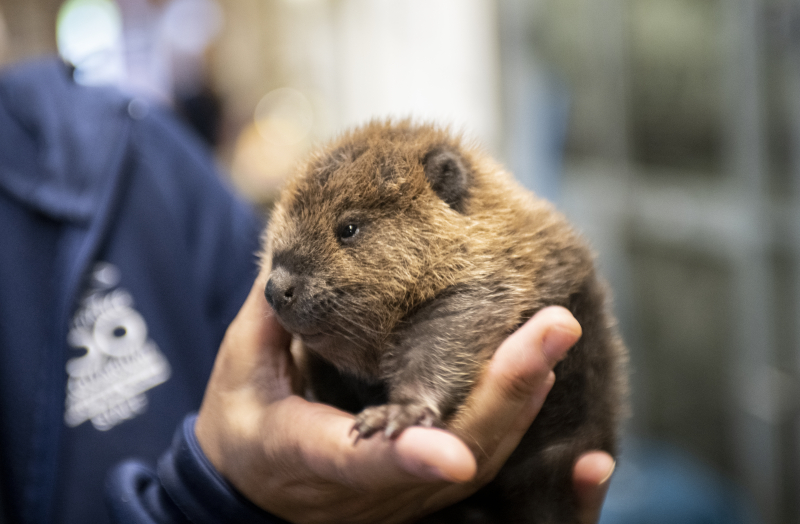Beavers are semi-aquatic rodents that are known for their unique adaptations to living in water. They are found in North America, Europe, and Asia and are famous for their ability to construct dams and lodges using branches, mud, and other materials. Beavers play an essential role in maintaining healthy aquatic ecosystems, and their diet has a significant impact on their environment.
In this guide, we will provide you with a detailed description of beavers and their diet. We will cover various aspects of beaver diet, including their preferences, adaptations, and ecological role in maintaining aquatic ecosystems.

- General Information about Beavers: Beavers are the largest rodents found in North America and Europe. They are covered with thick, waterproof fur that is brown or black in color, and they have long, flat tails that help them to swim and communicate with others. Beavers have a strong jaw and teeth that are designed for cutting wood, which they use to construct their dams, lodges, and burrows. They are primarily nocturnal and rely on their sense of smell and hearing to navigate and locate food.
- Beaver Diet: Beavers are herbivores and primarily feed on trees, shrubs, and other vegetation that grows near or in the water. They are selective feeders and prefer certain species of trees over others, depending on availability and nutritional value. The following are some of the most common food sources for beavers:
a. Trees: Beavers prefer to feed on the bark, leaves, and twigs of trees that grow near the water’s edge. Some of the most commonly consumed trees include aspen, willow, cottonwood, birch, and maple. Beavers also use their teeth to fell trees, which they then cut into smaller pieces to transport and store in their lodges or dams for later consumption.
b. Shrubs: Beavers also feed on shrubs, which they harvest by cutting them near the base. Common shrubs consumed by beavers include red osier dogwood, alder, and willow.
c. Aquatic Vegetation: Beavers also consume aquatic vegetation, such as water lilies, cattails, and pondweed, which they collect by diving to the bottom of the river or pond and pulling up the plants. They may also collect vegetation from the water’s surface.

- Adaptations for Feeding: Beavers have several adaptations that enable them to feed on their preferred food sources:
a. Large incisors: Beavers have large, strong incisors that are specifically adapted for cutting through tough wood. These teeth grow continuously throughout their lives, and beavers must grind them down by chewing on tough vegetation.
b. Webbed feet: Beavers have webbed feet that are specialized for swimming and diving. These feet help them to move efficiently through the water and locate food sources.
c. Powerful jaws: Beavers have powerful jaws that enable them to cut through tough vegetation and fell trees. They use their teeth to strip bark from trees and to cut trees into smaller pieces for transport.
d. Pouches: Beavers have special pouches located behind their incisors that enable them to transport food underwater. These pouches are lined with fur and can hold up to a liter of food.
- Ecological Role: Beavers play a vital role in maintaining healthy aquatic ecosystems. Their activities, such as dam-building, create wetland habitats that support a variety of plant and animal species. Their diet also has a significant impact on their environment, as their selective feeding behavior can influence the composition and structure of the surrounding vegetation. By selectively consuming certain trees and shrubs, beavers create openings in the forest canopy that allow sunlight to penetrate to the forest floor, promoting the growth of understory vegetation.
Additionally, beavers’ activities can impact the hydrology of their environment. Dams built by beavers can create ponds or wetlands, which can help to regulate water flow in rivers and streams. These wetlands can also act as natural filtration systems, removing sediment and pollutants from the water and improving water quality.
- Challenges and Conservation: Despite their importance in maintaining healthy aquatic ecosystems, beavers face several challenges to their survival. Habitat loss, pollution, and hunting have all contributed to declining beaver populations in some areas. In some locations, beavers may also be considered a nuisance due to their dam-building activities, which can cause flooding or damage to property.
However, many conservation efforts are underway to protect and restore beaver populations. These efforts include habitat restoration, relocation to areas with low beaver populations, and public education campaigns to promote coexistence with beavers.

In conclusion, beavers are unique and fascinating animals with a significant impact on their environment. Their diet, which mainly consists of trees, shrubs, and aquatic vegetation, plays a vital role in maintaining healthy aquatic ecosystems. By understanding their feeding behavior and ecological role, we can better appreciate the importance of these remarkable animals and work to protect their populations for future generations.